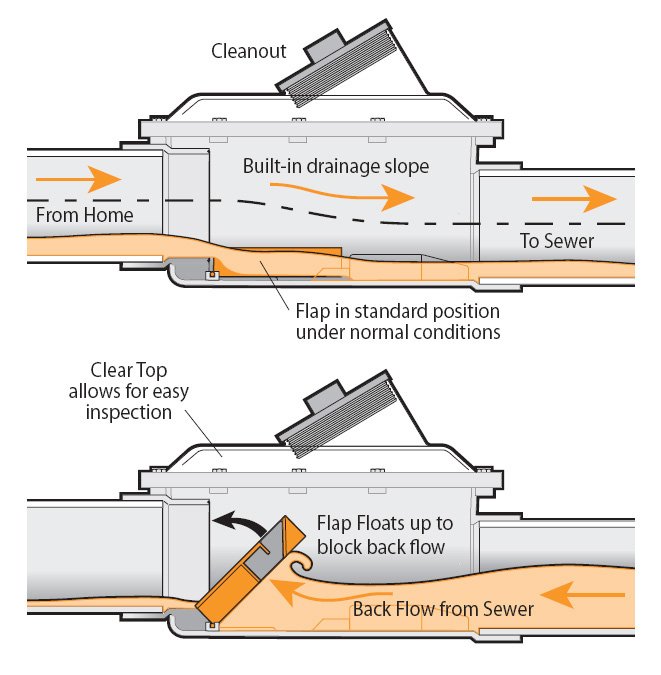A backwater valve is a device that allows sewage to flow in only one direction – from your home to the sewer. When installed and functioning correctly, it should prevent sewage from backing up into your home.
Because these devices are the property and responsibility of the homeowner, it's important for anyone who has one in their home to understand how to keep them working properly.
How It Works
Under normal conditions, the valve is open to allow sewage to flow through the device and out of the home. If sewage starts flowing backwards, the valve is pushed closed, reducing the risk of sewage entering the home. Once backflow stops, the valve reopens to allow normal flow of sewage out of the home.
Frequently Asked Questions
| What causes backflow? |
Sewage backflow may occur in several circumstances:
|
| How do I maintain my backwater valve? |
|
Maintenance of your backwater valve is very important to ensure it is properly functioning and will not cause an issue within your internal sanitary plumbing.
|
| How do I prevent blockages around the valve? |
|
To prevent a blockage in the sewer system and the backwater valve, ensure only toilet paper and human waste are flushed down the toilet. Items that should not be disposed of down any drain include hygiene products, food scraps and any fat, oil or grease (FOGs). Visit www.idontflush.ca for more information on what can happen when FOGs enter your sewer system. |
| What can happen if the backwater valve is not maintained properly? |
If the backwater valve is not maintained properly it could lead to:
|
| How do I prevent backflow from entering my home? |
|
Unfortunately, backwater valves do not guarantee that a sewage backup will not occur. To maximize the valve's effectiveness, it is important to:
|
| Who is responsible for maintaining the backwater valve? |
|
The owner of the property or the property manager is responsible for maintaining the backwater valve. All the internal plumbing of a home, including a backwater valve, is privately owned by the home owner. |
Contact Us






